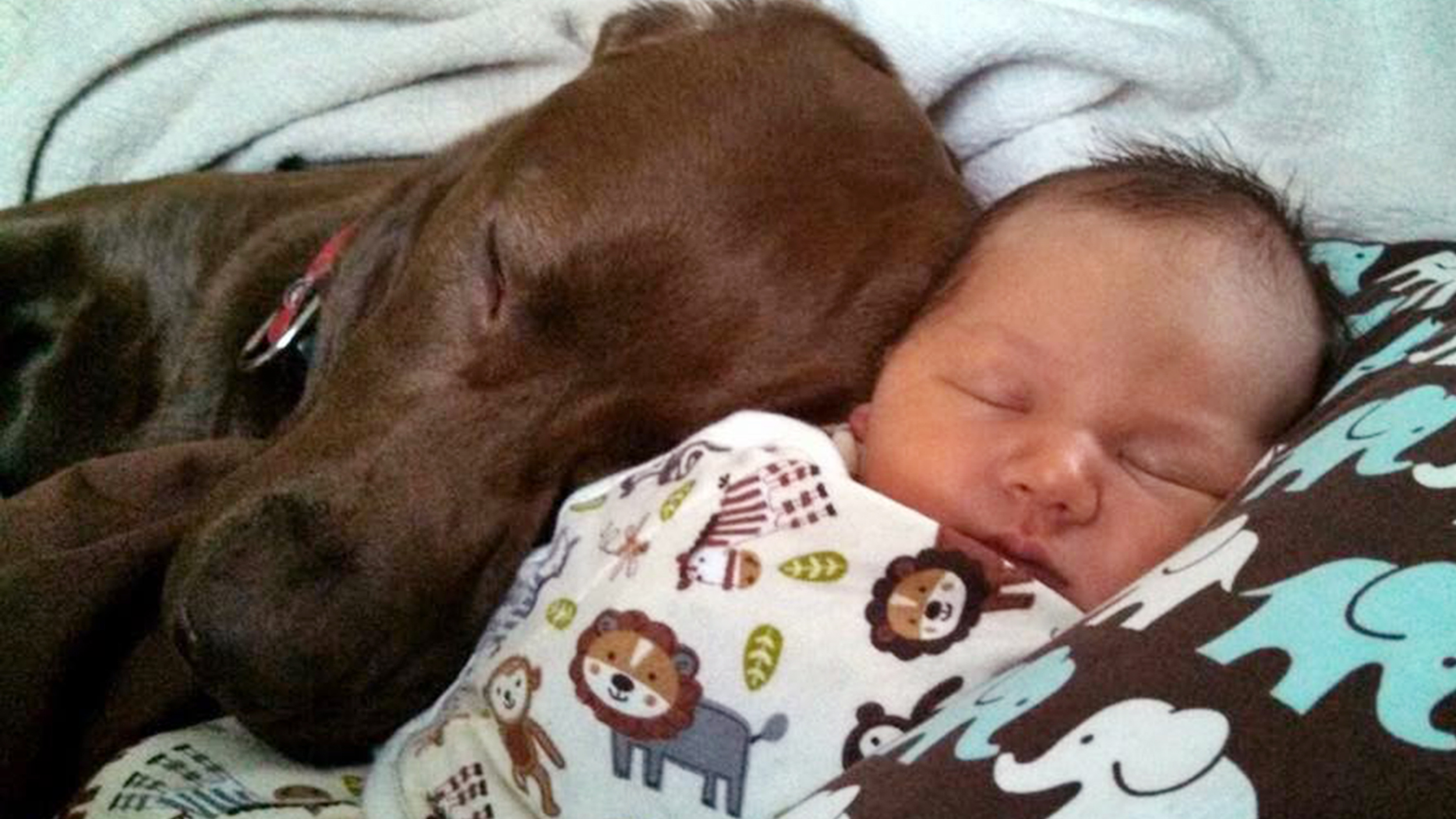Many young couples decide to get a dog to make their new house a home. It is their first step into the world of family life, and often, the dog takes on the role of the child in the family. It seems harmless enough, but can lead to problems when a real baby enters the equation. How will your four-legged friend adapt to the new family dynamic? Will he feel excluded and neglected when Baby starts getting all the attention?
It’s something that can cause real worry – after all, one thing you can’t do is put your new baby at any kind of risk. But with the right preparation and an organized approach, your family of three can become a family of four without drama.
Preparation is key
Let’s be honest, you’re not going to be able to give the dog so much attention when Baby comes along. Dogs are creatures of habit and highly adaptable, so get ready for the change ahead of time. Instead of constantly being around your dog, give him periods of undivided attention, for example going for walks or playing fetch, and then spend more time in a different room so your dog gets used to you having other things to do.
You can also get the dog used to baby noises by playing recordings in the house – you could even start carrying a realistic baby doll that moves and makes sounds. Reward the dog for being calm and well-mannered around the doll.
Bringing baby home
The house will be in uproar for a few days. There will be lots of visitors turning up at all hours, so ensure everyone knows there is a dog in the house. This signage website has a choice of suitable warning signs for your door or front gate. You can get your dog ready for the homecoming by bringing some of baby’s clothes home from the hospital in advance. Remember, dogs use their sense of smell more than anything else, so this will be a more powerful introduction than sights or sounds.
Making the introductions
With the preparations complete, the key to the introductions is to make them as casual as possible. If you make a big performance of showing baby to the dog, your pet will think there is something out of place. If, on the other hand, you behave as if nothing could be more normal than having a screaming baby around the place, your dog will follow your lead. Remember, you are the pack leader, so lead by example!
Watch the body language
Like people, every dog is different, so you can never be 100 percent certain as to how they will react until the moment comes. Watch for any signs of aggression or stress, for example growling, bared teeth, trembling or panting. If the dog does growl, do not punish – a growl is a warning, and if you deter the dog from expressing himself in this way, he might simply go straight to overt aggression next time.
Nine times out of ten, family harmony will ensue, but always take a safety-first approach. Never leave your dog and your baby alone together in those early weeks, and if you have concerns, seek advice from a professional dog behaviorist.
